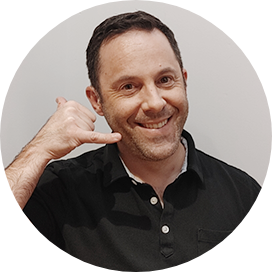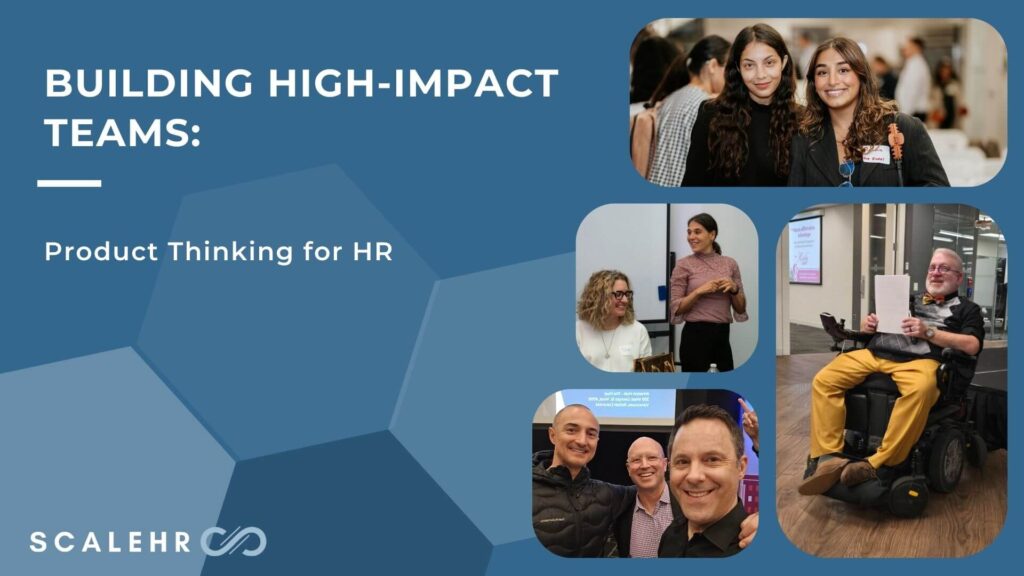In today’s fast-paced work environment, the way we approach HR is evolving. What if we could apply principles from product development to create high-impact teams? This post explores how HR can think like a Product team, leveraging iteration, feedback loops, and scalable design to enhance team performance.
Note: this blog post follows up on a recent Unmuted Podcast episode with Selina Miah, Head of People & Culture at Maple. View the episode below.
A New Perspective on HR
The world of work has significantly changed during the past 5+ years. HR has been challenged with shifting how it approaches HR. Many tech companies structure their organizations with their Product teams at the centre — they touch every single function/department in the company and play a vital role in successful tech organizations. What if we looked at HR like we do the Product function? This would mean shifting our focus to creating an AI employee experience that is both engaging and effective. This means prioritizing user experience, similar to how product teams prioritize their customers.
When we treat HR as a product, we begin to ask critical questions:
- How do we gather feedback from employees?
- What data can drive our decisions?
- How can we continuously improve our processes?
This approach allows us to build systems that are not only functional but also enjoyable for employees to use. After all, HR is about people, and understanding their needs is crucial.
Balancing Agility and Scalability
One challenge many HR leaders face is balancing agility with scalability. As organizations grow, creating global teams that are both autonomous and aligned with company goals becomes increasingly complex. The COVID-19 pandemic has accelerated this shift, making it essential for HR strategies to evolve continuously.
To address this, HR can adopt a product mindset:
- Embrace change: Just as products evolve, so should HR strategies. Nothing is static.
- Iterate quickly: Use feedback to make small, meaningful changes rather than overhauling entire systems. The latter takes way too long!
- Celebrate wins: Recognize improvements, no matter how small, to motivate teams.
Applying Product Principles to HR
So, how do we take these product principles and apply them in HR? Here are a couple of practical examples:
Redesigning Onboarding
One recent initiative involved redesigning the onboarding process. Initially, the onboarding experience was overwhelming for new hires, with vital information often lost in the shuffle. Instead of a complete overhaul, the team gathered feedback and made incremental changes.
- Identified key areas of confusion.
- Streamlined the information flow.
- Introduced mentorship pairs to support new hires.
This iterative approach allowed the HR team to refine the onboarding experience continually, ensuring it meets employee needs and expectations.
Implementing New Technology
Another example is the implementation of a new HRIS designed to streamline requests. By focusing on user experience, the team analyzed how employees interacted with the platform, identifying areas for improvement. This approach not only enhances efficiency but also ensures that employees feel supported in their roles.
Team Structure and Skill Development
Transitioning to a product-focused HR model requires changes in team structure and skill development. It’s not just about the tools; it’s about fostering a culture of agility and innovation. Here’s how to approach this:
- Develop a roadmap: Align HR goals with business priorities and continuously revisit them.
- Foster a culture of feedback: Encourage open communication and regular check-ins to assess progress.
- Upskill the team: Provide training in agile methodologies and product management principles.
These steps help create a team that is not only adaptable but also deeply engaged in the HR mission.
Building a High-Impact HR Strategy
Creating a robust HR strategy involves establishing a clear North Star—your organization’s purpose. This remains constant, while the tactics and methodologies can evolve. Here’s how to effectively apply product principles to build a high-impact HR strategy:
Define Your Purpose
Your North Star should guide all HR initiatives. It’s essential to communicate this purpose clearly across the organization, ensuring everyone understands how their work contributes to the broader mission.
Set Quarterly Goals
Instead of planning for the entire year, focus on quarterly goals. This allows for flexibility and responsiveness to changes in the business environment. Regularly revisit these goals to ensure they align with the company’s direction.
Embrace Agile Methodologies
Utilize agile frameworks to facilitate collaboration and speed in decision-making. Regular project updates and retrospective meetings can help assess what’s working and what needs adjustment.
Designing Autonomous Teams
As companies shift toward hybrid work environments, designing teams that can operate autonomously while remaining aligned with company goals becomes essential. Here are key strategies to achieve this:
Clarity of Purpose
Ensure that each team member understands how their role contributes to the company’s mission. This clarity fosters autonomy, as employees feel empowered to make decisions that align with organizational goals.
Provide Frameworks, Not Policies
Instead of rigid policies, provide teams with frameworks and principles that guide their decision-making. This allows for flexibility while maintaining alignment with the company’s vision.
Encourage Contextual Empowerment
Empower teams with the information they need to make informed decisions. This includes sharing business priorities and relevant data in real time. The more context employees have, the better equipped they are to act autonomously.
Leveraging Technology
Technology plays a crucial role in supporting these strategies. Here are some tools that can enhance HR processes:
- Confluence: For knowledge sharing and documentation.
- Jira: To manage project workflows.
- Lattice and Kudos: For recognition and feedback.
Using these tools can streamline processes, improve communication, and foster a culture of recognition.
The Importance of Feedback
Feedback is an essential component of a product-focused HR strategy. Regular check-ins and feedback loops allow teams to adjust their approaches based on real-time data and employee input. This not only enhances processes but also builds trust among team members.
Conclusion: Designing for People
Ultimately, the goal of applying product thinking to HR is to design for people—collaborating with them rather than dictating policies. By fostering a culture of agility, feedback, and continuous improvement, HR can create high-impact teams that are aligned with organizational goals.
In a world where agility and adaptability are paramount, embracing this new approach in HR is not just advantageous; it’s essential for success.








